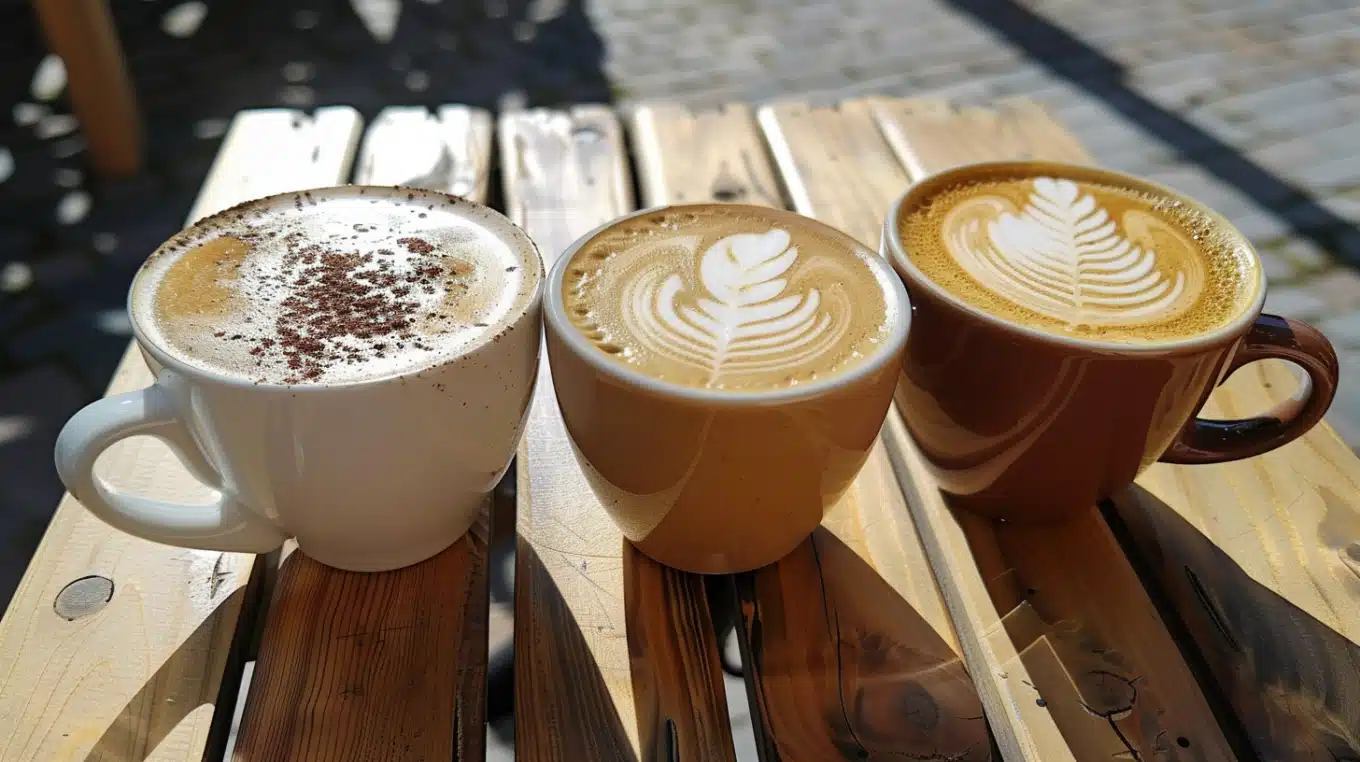Do you love the rich, creamy taste of cappuccino but wonder about the caffeine content in different varieties?
Many cappuccino lovers are curious about how much caffeine kick they get with each sip.
This article will explore 10 popular cappuccino varieties and rank them based on their caffeine levels.
From classic cappuccinos to flavored options like vanilla and mocha, we’ll break down the caffeine content in each type.
By the end, you’ll understand which cappuccinos pack the biggest caffeine punch and which are better suited for those seeking a milder boost.
Get ready to discover the perfect cappuccino to suit your taste preferences and caffeine needs.
Basic Components of a Cappuccino
A cappuccino is a classic Italian coffee drink that combines espresso, steamed milk, and milk foam in equal parts.
These three key ingredients work together to create a balanced and creamy beverage.
Espresso forms the base of a cappuccino, providing a concentrated dose of coffee flavor and caffeine.
Components of Cappuccino and Their Role
| Component | Description | Role in Cappuccino |
|---|---|---|
| Espresso | A concentrated shot of coffee, typically 1 ounce. | It forms the base, providing rich coffee flavor and caffeine. |
| Steamed Milk | Milk is heated and slightly frothed to add volume and warmth. | It balances espresso’s strong flavor and adds a creamy texture. |
| Milk Foam | Milk is heated and aerated to create a thick, velvety foam. | Tops the drink, adding signature texture and warmth. |
Different Types of Cappuccino and Their Caffeine Content
1. Standard Cappuccino
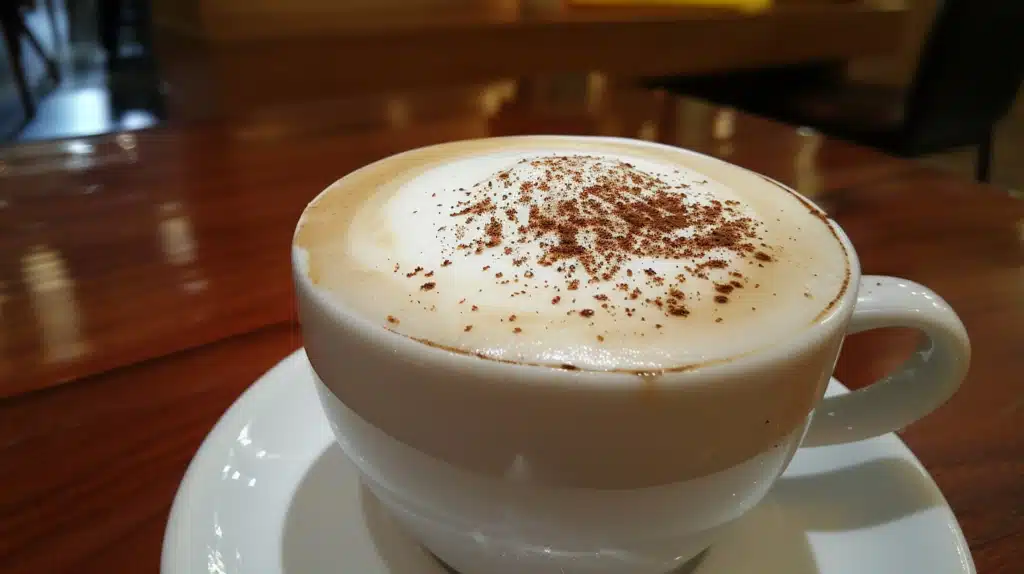
A standard cappuccino is a classic coffee drink with equal parts espresso, steamed milk, and milk foam.
It is typically served in a small, 6-ounce cup.
To create a standard cappuccino, a skilled barista pulls a single shot of espresso (about 1 ounce) and pours it into the serving cup.
They then add an equal amount of steamed milk and top it off with a layer of velvety milk foam.
The key to a well-crafted cappuccino lies in the precise technique and order of these steps.
Caffeine Content
The caffeine content in a standard cappuccino comes solely from the espresso shot, which contains around 63 mg of caffeine.
However, this can vary slightly based on factors such as the variety of coffee beans and the specific amount of coffee used for the shot.
Traditionally, a cappuccino is served in a pre-heated ceramic cup, which helps maintain the ideal temperature and allows the espresso flavors to shine.
2. Wet Cappuccino
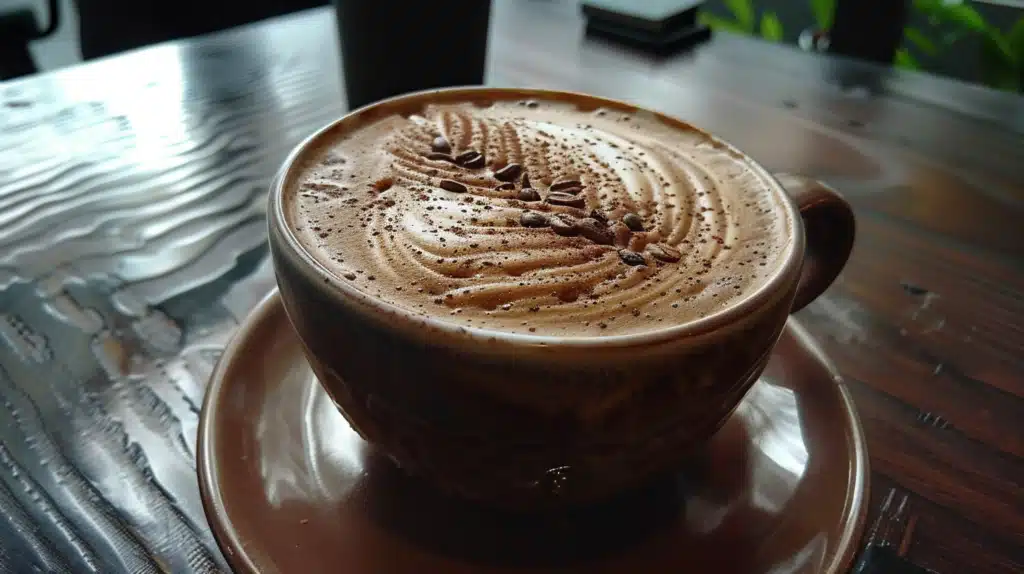
A wet cappuccino is a variation of the classic cappuccino with more steamed milk and less milk foam.
This results in a creamier, smoother texture compared to the standard version.
When preparing a wet cappuccino, baristas adjust the ratio of the ingredients.
They add more steamed milk to the espresso shot while reducing the quantity of milk foam on top.
This creates a less airy and more velvety drink that blends the espresso and steamed milk more seamlessly.
Caffeine Content
The caffeine content in a wet cappuccino remains the same as a standard cappuccino, around 63 mg per single shot of espresso.
The increased steamed milk content does not impact the caffeine level, as the milk does not contain caffeine.
Wet cappuccinos are typically served in the same cup style as traditional cappuccinos.
However, the increased steamed milk content may make them appealing to those who prefer a milder espresso flavor and a smoother, creamier texture.
3. Dry Cappuccino
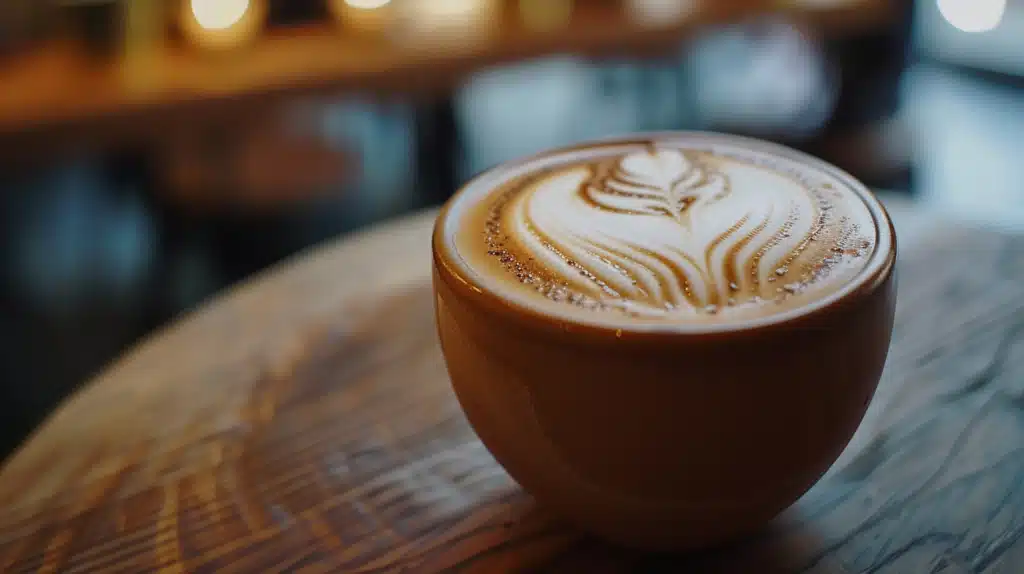
A dry cappuccino is a variation that features a higher proportion of milk foam to steamed milk than a standard cappuccino.
This results in a lighter, frothier texture and a more pronounced espresso flavor.
When crafting a dry cappuccino, baristas use less steamed milk and create a thicker layer of dense, airy milk foam.
The foam is carefully prepared to achieve a stiffer consistency, sitting atop the espresso, creating a distinct layered appearance.
Caffeine Content
The caffeine content in a dry cappuccino is the same as in a standard cappuccino, around 63 mg per single shot of espresso.
While the ratio of steamed milk to foam differs, the amount of espresso remains the primary determinant of caffeine content.
Dry cappuccinos are typically served in a cappuccino cup, but some may prefer a slightly larger cup to accommodate the increased volume of foam.
The experience of sipping the espresso through the thick layer of foam enhances the rich, bold flavors of the coffee.
4. Flavored Cappuccinos
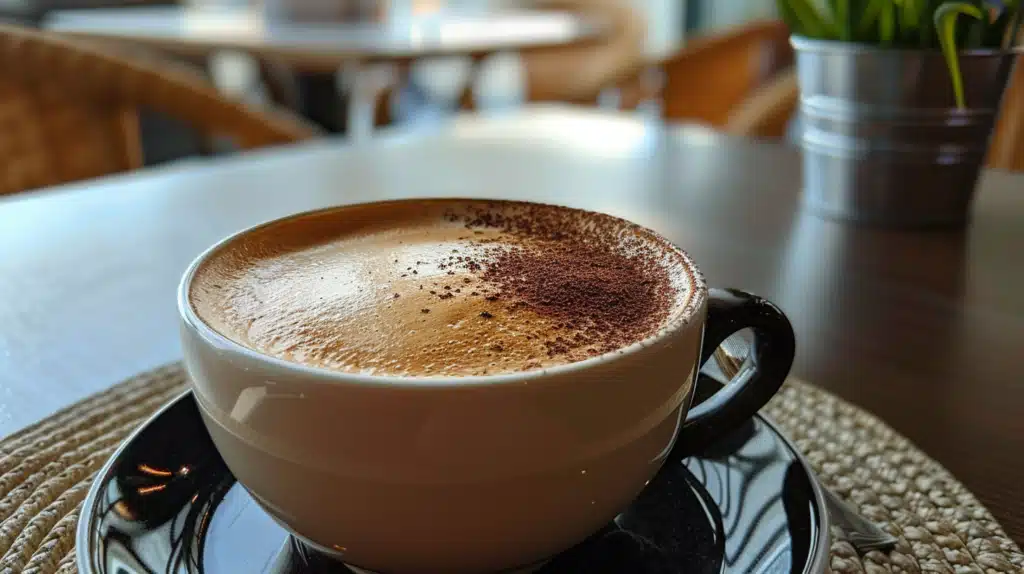
Flavored cappuccinos offer a delightful twist on the classic cappuccino by incorporating various flavors such as vanilla, caramel, or chocolate.
These additions enhance the aroma and taste of the drink, making them a popular choice among coffee enthusiasts.
One of the most beloved flavored cappuccinos is the vanilla cappuccino.
The addition of vanilla syrup or vanilla-infused milk creates a sweet, creamy note that complements the espresso’s natural bitterness.
Similarly, caramel cappuccinos feature a rich, buttery caramel flavor that pairs beautifully with the robust coffee base.
For those who crave a touch of indulgence, mocha cappuccinos are a perfect choice.
By adding chocolate syrup or cocoa powder to the espresso shot, the drink takes on a luxurious chocolatey depth, creating a harmonious blend of coffee and chocolate flavors.
Flavored cappuccinos are prepared by incorporating the desired flavoring into the espresso shot or steamed milk.
Skilled baristas carefully balance the flavors to ensure that they complement rather than overpower the essence of the cappuccino.
Caffeine Content
While the addition of flavors like vanilla or caramel does not significantly impact the caffeine content, mocha cappuccinos may contain a slightly higher amount of caffeine due to the presence of chocolate.
Coffee lovers can also request an extra shot of espresso to boost the caffeine level and intensify the flavor profile.
5. Mocha Cappuccino
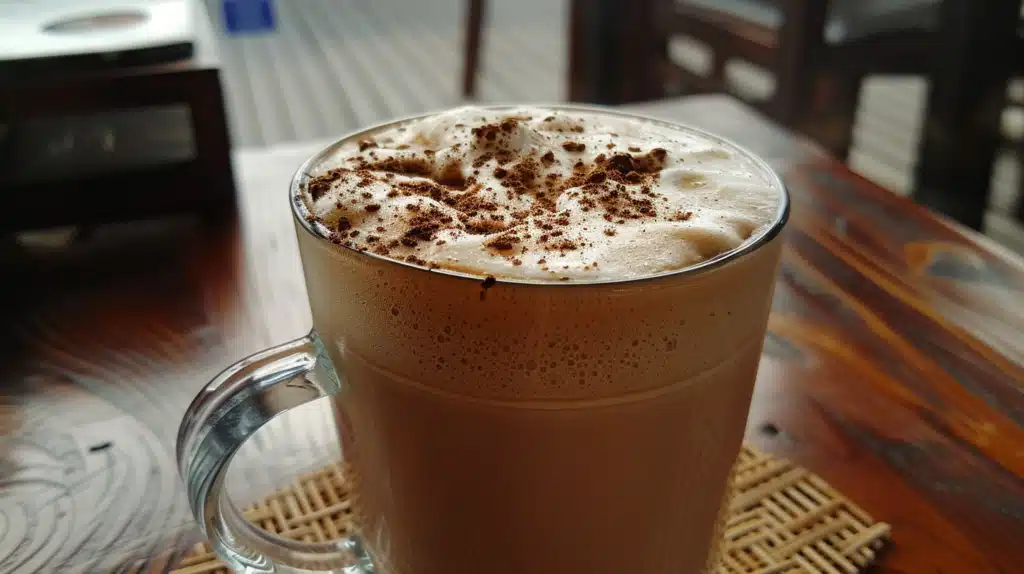
A mocha cappuccino is a delectable variation that combines the rich, bold flavors of espresso with chocolate’s sweet, indulgent taste.
This fusion creates a perfect balance that appeals to coffee and chocolate enthusiasts.
To craft a mocha cappuccino, baristas mix chocolate syrup or cocoa powder with a shot of espresso.
This forms the drink’s base, then topped with steamed milk and a layer of velvety milk foam.
The addition of chocolate enhances the complexity of the cappuccino, introducing a new dimension of flavor that complements the espresso.
Caffeine Content
The caffeine content in a mocha cappuccino primarily comes from the espresso shot, which typically contains around 63 mg of caffeine.
However, the presence of chocolate can slightly increase this amount, depending on the type and quantity of chocolate used.
Using a double shot of espresso or opting for dark chocolate with a higher caffeine content can further elevate the caffeine level in the drink.
6. Skinny Cappuccino

A skinny cappuccino is a lower-calorie alternative to the classic cappuccino. It is made using non-fat or low-fat milk instead of whole milk.
This variation caters to health-conscious coffee drinkers who want to enjoy the taste and texture of a cappuccino while reducing their calorie and fat intake.
To prepare a skinny cappuccino, baristas steam skim milk or 2% milk to create the signature creamy texture and foam layer.
The lower fat content may produce a slightly less rich taste and mouthfeel than a standard cappuccino.
Skilled baristas can adjust their steaming techniques to achieve a similar frothiness and velvety texture.
Caffeine Content
The caffeine content in a skinny cappuccino remains the same as a regular cappuccino, as the type of milk used does not impact the caffeine level.
A single shot of espresso, which forms the drink’s base, typically contains around 63 mg of caffeine.
Those seeking a stronger coffee flavor or a higher caffeine intake can request an additional shot of espresso.
7. Single vs. Double Cappuccino
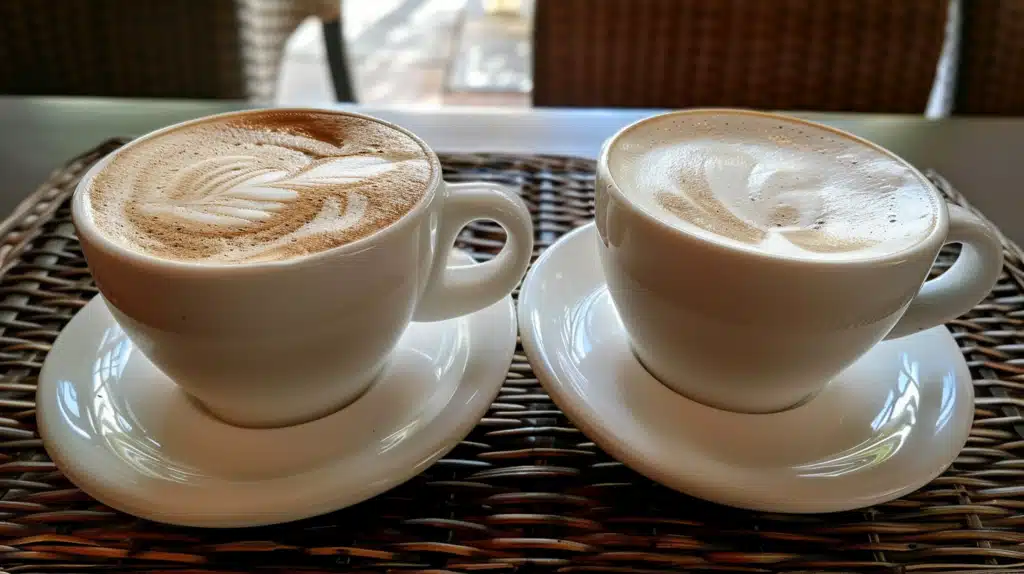
One key decision when ordering a cappuccino is whether to have a single or double shot of espresso.
A single cappuccino contains one shot of espresso, while a double cappuccino includes two shots, offering a more intense coffee experience.
Caffeine Content
The primary difference between a single and double cappuccino is its caffeine content.
A single shot of espresso typically contains around 63 mg of caffeine, whereas a double shot delivers approximately 126 mg.
This distinction is particularly relevant for individuals mindful of caffeine intake or those seeking a stronger coffee kick.
Doubling the amount of espresso in a cappuccino increases the caffeine content and significantly impacts the flavor profile and strength of the drink.
The additional espresso shot creates a richer, more robust taste, with a deeper coffee flavor that stands out against the milk and foam.
This bolder flavor profile appeals to those who prefer a more intense coffee experience.
Choosing between a single or double cappuccino often depends on personal preference, caffeine tolerance, and the time of day.
8. Iced Cappuccino

It is perfect for those who crave the bold flavor of espresso and the creaminess of frothed milk but prefer a cooler drink.
This chilled version has become a delightful alternative to hot cappuccinos, especially during the warmer months.
To create an iced cappuccino, skilled baristas begin by pulling one or two shots of espresso, depending on the desired strength.
The espresso is then allowed to cool slightly before being poured over a glass filled with ice.
The key to maintaining the signature cappuccino texture is to add cold, frothed milk to the espresso.
It creates a distinct layered appearance that differentiates it from other iced coffee beverages.
Caffeine Content
The caffeine content in an iced cappuccino remains consistent with its hot counterpart, with a single espresso containing around 63 mg of caffeine.
The number of shots used and the size of the drink can influence the total caffeine content, but the beverage’s temperature does not alter the caffeine level.
9. Specialty Cappuccinos
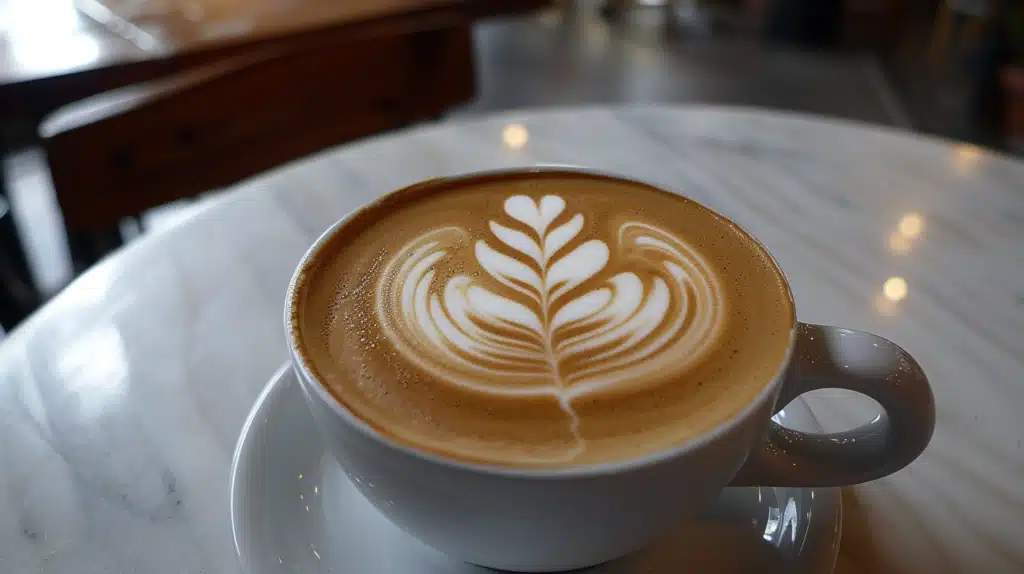
Specialty cappuccinos represent a diverse array of creative variations on the classic cappuccino.
It incorporates unique flavors, techniques, and presentations catering to various tastes and preferences.
These inventive twists on the traditional recipe can be found in cafes and coffee cultures worldwide, each offering a distinct and memorable coffee experience.
Some popular examples of specialty cappuccinos include the Vienna Cappuccino, which replaces the standard milk foam with a dollop of whipped cream, adding a rich and indulgent touch.
The Pumpkin Spice Cappuccino, a seasonal favorite, infuses the drink with the warm, comforting flavors of pumpkin, cinnamon, and nutmeg, making it a popular choice in autumn.
Caffeine Content
While a standard cappuccino typically contains around 63 mg of caffeine per single espresso shot, specialty cappuccinos may have varying caffeine levels depending on the specific ingredients and preparation methods.
Adding extra espresso shots, chocolate, or other caffeine-containing components can significantly increase the caffeine content.
Similarly, certain brewing techniques, such as using stronger coffee blends or pulling longer shots, can produce a more intense caffeine kick.
10. Decaffeinated Cappuccino
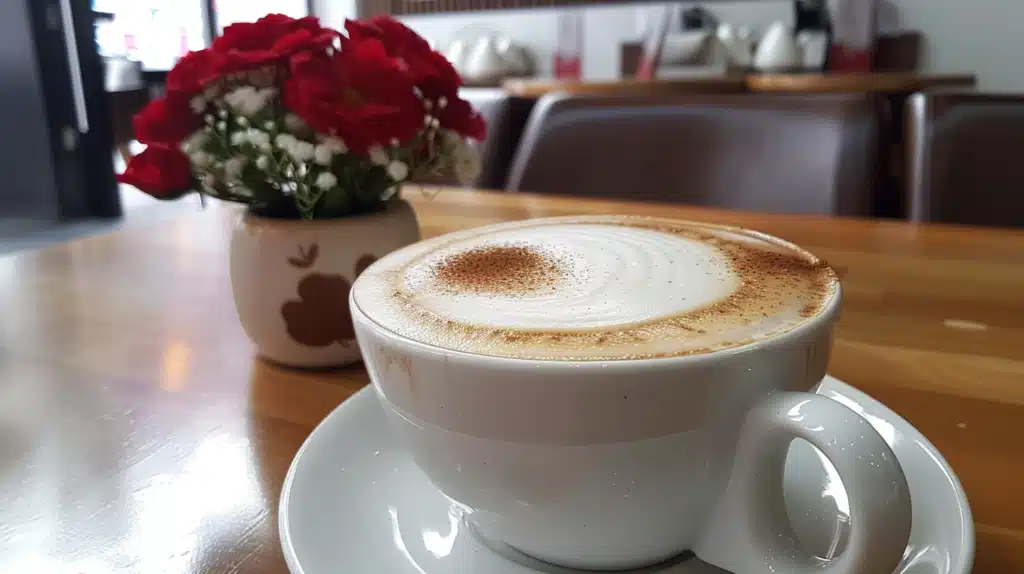
A decaffeinated cappuccino is a perfect choice for those who love the classic taste and texture of a traditional cappuccino but prefer to limit their caffeine intake.
This variation offers the same rich, creamy experience but significantly reduced caffeine content.
It is an ideal option for individuals sensitive to caffeine or those who desire a less stimulating beverage.
To create a decaf cappuccino, baristas use espresso made from coffee beans that have undergone a decaffeination process.
Caffeine Content
This process removes 97-99% of the original caffeine content, resulting in an espresso shot with only 1-15 mg, compared to the 63 mg in a regular shot.
The minimal residual caffeine makes decaf cappuccinos a suitable choice for evening coffee indulgence or those who need to restrict their caffeine consumption for health reasons.
While the decaffeination process aims to preserve the rich flavor profile of regular espresso, some subtle differences in taste may be noticeable.
The removal of caffeine can slightly alter the coffee beans’ natural oils and aromatic components, potentially affecting the overall flavor.
However, advancements in decaffeination technology have greatly improved the taste of decaf espresso, allowing modern decaf cappuccinos to resemble their caffeinated counterparts more closely.
Conclusion
Understanding the caffeine content in various cappuccino varieties is crucial for coffee lovers looking to make informed choices.
From the classic cappuccino to specialty variations like the mocha or iced cappuccino, each type offers a unique flavor profile and caffeine level.
By exploring the differences between single and double shots and options like decaffeinated and skinny cappuccinos, you can tailor your coffee experience to your personal preferences and lifestyle.
Whether you’re seeking a robust caffeine kick or a milder, more indulgent treat, there’s a cappuccino out there.
So, next time you visit your favorite coffee shop, consider trying a new variety and suggesting the rich, creamy goodness that makes cappuccinos a beloved choice among coffee enthusiasts worldwide.
Which cappuccino will you choose today?

